Want to check out our tractor maintenance videos? Click here to see what we've got!
Vintage Tractor Engineer has been out and bought a new County tractor toy!
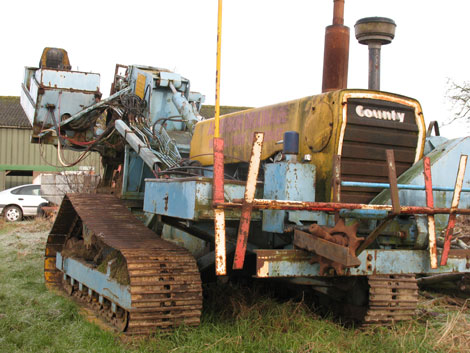
Barth K150
We’ve been searching the magazines and internet for a couple of years to find a trenching machine to lay drainage pipe on our farm. We’ve replied to several adverts and each time we got the same answer – “Sorry, it sold immediately”.
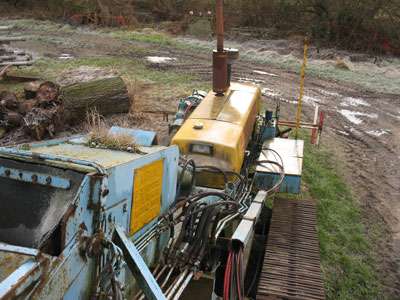
View from the drivers seat, digging chain lifted up.
Trenchers are clearly in demand and this is probably due to a number of contributing factors. We’ve had several high rainfall years in the UK and with larger tractors and machinery, compaction has caused waterlogging of the fields. I think the major problem, however, is the lack of maintenance of the agricultural drainage system and the fact that most of the field drains were installed many years ago. Draining is an expensive business and farmers are reluctant to spend the money, particularly when farm incomes have been so depressed.
Things have begun to change though. Farm incomes have been a little better in 2007-2009 and farmers have been calling in the drainage contractors to try and improve their wettest ground. Much of the drainage system is at least 35 years old and some fields are still reliant on drains installed 100 years since (or more). These drainage systems have had fantastic longevity and some of these are still working to this day. Unfortunately many of these pots are only in at a shallow depth and the large heavy machinery and deeper working depths have sometimes cut through these drains and ruined the system.
Barth K150
The ‘K150’ numbering refers to the digging depth of 150cm and this machine was manufactured in 1982. The machine is built around a County skid unit with a reduction box fitted to facilitate the low ground speeds required for trenching. This particluar machine was first used by Alderson Drainage of Yarm, North Yorkshire and still bears their decals. A quick telephone call to Aldersons was made and we learnt all sorts of things. Aldersons were really interested to hear about the machine, where it was now going to work, and it was a pleasure to talk to them. It its heyday the trencher had covered 300,000 metres annually. The only reason Aldersons sold the machine was because in the Yarm area they have stone to contend with in the soil and this would cause the top drive shaft to break. We will be using the Barth in predominantly sand and loam (no stones), and we were told the ‘little Barth’ would motor on just like a modern big Mastenbroek.
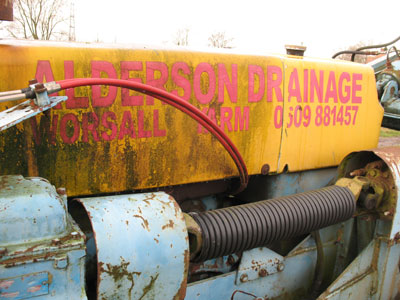
Bonnet decals, Alderson Drainage.
If you’re interested in County tractors converted into draining machines then check out Alf Werner’s County 1124 that he converted to 6 wheel drive and uses for operating his trencher. Quite impressive!
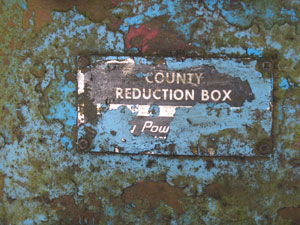
County reduction box.
Well we can’t wait to take it to the field and have a go. I’m sure it’s going to be a bit of a learning curve to start with but it will be really useful to have our own machine. We will be able to do a field each summer after the corn has been cut, in good dry conditions and with full control of the operation. Next thing we need is a laser. We’ve been quoted £1150 for an ‘indicate’ system, but to go for full ‘machine control’ the price has come in at over £3,000. This technology would have been £10,000 so I suppose it’s not so bad for +/- 2mm accuracy.
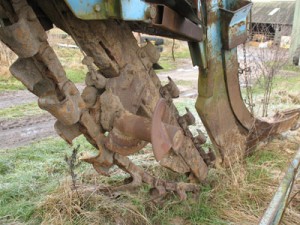
Digging chain and pipe chute.
One thing we can’t get to the bottom of is what to do in running sand? The vale of York has large areas of sandy soil and in winter time if you dig a hole the sand is so saturated that it just runs like quick sand and the problem is that it can very easily and quickly get into the drains and block them. It is possible to buy pipe wrapped with a filter material to prevent this from happening, but neighbouring farmers have found this to block with ochre within 3-4 years. Some people say unwrapped pipe is OK if the ‘black’ topsoil is put back on top of the pipe (instead of the orange subsoil). Others say use unwrapped pipe and then 10″ of stone on top works the best.
If you have any experience of draining in running sand and know what works best then please let us know. We would be interested to hear your views.

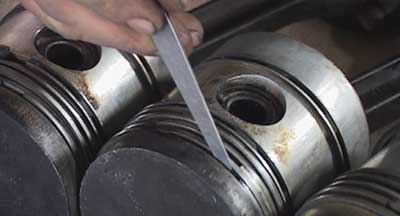
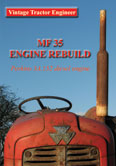
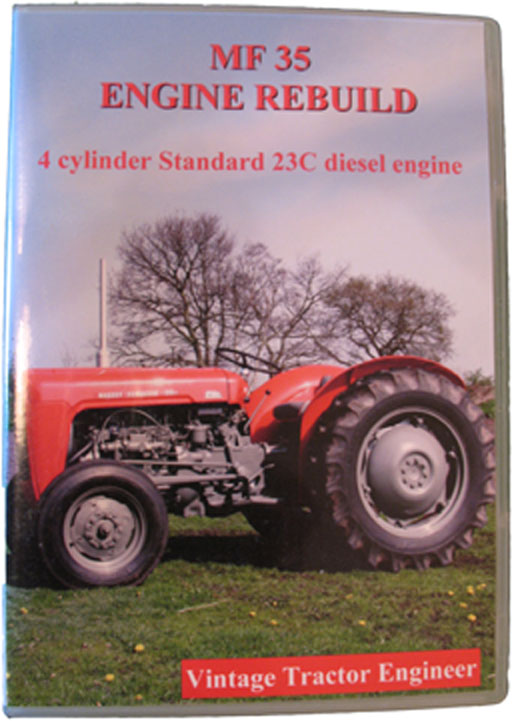
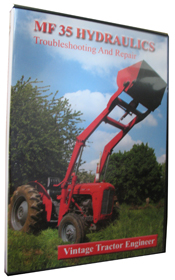
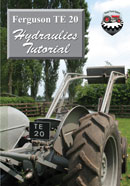
Oh i just noticed your sand Dilemma. Extend the keel and put a funnel on the new bit, then run a gravel trailer allong side.
Good looking machine. Looking at the north yorkshire location I can bet you money i have climbed that machine as a child 😀 My Grandfather was G D Simpson of Wheldrake. And he used to be one of the prime people to go to to have these fixed 😀 It’s nice to see a working K150, I grew up with Howards and Barths as climbing frames.
Hi Steve
I’ve been looking around the Net for information on the Barth K150 as there is one working here at Newcastle-upon-Tyne. It is being used to assist in draining parts of the Town Moor which flood during the “more rainy periods than usual”.
I have seen it working a few times in the past but never close enough to get pictures! That is really my ultimate aim however working hours mean that they are done for the day and the machine is behind a fence which makes things difficult. I have no idea who owns it either.
I hope you enjoy running your K150 and it gives you many years of good service. I’m honestly surprised that its not older than 1982 vintage?
Best regards
Gavin
Hi Everyone,
We’ve used the Barth K150 quite a bit this year. It has run really well. Most of the land in our area is sandy soil, and when digging about 90cm deep it takes just over an hour to lay 300m of pipe. Obviously there’s a lot of time surveying, setting in etc. but in a full day we were doing about 900m.
It always astounds me that by the time we’ve layed 300m of pipe (about an hours work) and then gone back to the outlet end to start another run, the drain is already running – very satisfying.
We’ve had a very dry period early on this summer in England, yet some of the drains have started to run from the moment we installed them and haven’t stopped running yet!
I meant to take some video, but was that busy on the days we were draining that I never got any taken. Will take some next year.
Steve.
hi andyk140 and k150 very different machinesk140 was a special machine. for all its faults itworked pipe sellers hated them because they had trouble getting enough pipe(clay) to keep it going.we ran howard trencher good week 100 chainsk140 150-200 chains a week.never ran k150 but not well liked by people who ran them.k140 was right.difficult to improve machine that was right.cheers
hi my name is godfrey and have spares for barthAlso repaired front coupling on k140 with 6 cylinder.phonenumber07816411884
Hi
Does anyone know where spare parts can be obtained in England? Needing Front Drive Coupling.
Thanks
Sue
Hi
I’m trying to find out some more info on Barth trench diggers, partly for a model I’m building and partly because I like collecting literature on odd machines. Have you got any literature on Barth machines, I’m really looking for info on the K140 machines based on the Ford 5000 skid unit but by the looks of it your K150 is pretty similar. I imagine they would have used a lot of standard parts on different machines, tracks and the like. After any brochures, manuals or parts lists if you have any. Copies are fine.
Hi Alf,
When we survey the first field we’ll see if we can achieve this level of slope. I think we will struggle to achieve this, but it would have been good to do so especially seen as we are draining in sand.
We have installed a new drainage tank, with each pipe entering in individually so they can be washed out (in England we call it ‘jetting out’).
We have had heavy rain here in over the past few days. Many fields are flooded and the drains are all running at full capacity. It is conditions like this that really show the value of a good drainage system. I think it is going to be a late Spring here in the UK. It is still cold and it will take a few weeks to dry up, before we can start ploughing and drilling the crops.
Steve.
Hello again.
Seems like you never get rid of me! I have always been learned that never dig a slope less than 2/1000. When I have asked Why? I have been told that it is just so! Many years later I found out why: With that slope the water-flow is high enough to keep the pipe self-cleaning from sediment. If the slope have to be less, try to arrange the system so it is flush-able. “Over an out” Alf
Thanks again Alf,
I really appreciate you taking the time to offer your knowledge. It is good to hear all these different suggestions and methods.
I will think about all your suggestions and then let you know what we decide to do. This particular field doesn’t seem to have too much iron oxide in the soil. The old drains that exit into the ditch don’t run any ‘orange’ colour. Only a couple of fields away there is certainly iron oxide (locally we call it ochre), as the ditches are an orange/red colour and there are lumps of iron stone (150mm irregular shaped metallic iron pieces) in the soil that cause all sorts of problems with the potato harvesters.
Most of the fields in our area are very flat and have little fall into the ditches. We have been told to try and achieve 1″ fall over a chain (a chain is 20 yards – about 18.3 metres), as a standard. OK, that may not always be possible but on the other hand we may be able to get more fall than this in certain places.
Thanks,
Steve.
Hi again Steve, are you in winter-quarters too, waiting for the spring in the workshop?
The pipe I normally use is just the normal one. Some years ago I was asked to re-drain a field someone ele have failed with. It was a very silty ground, so we made an experiment. We used normal perf. pipes wrapped with cocos-fiber, and it seemed to work! As I said in my first komment, if the gravel os to “open” it will be filled with sand ( or clay ). Important is that the gravel is clean from silt. “In old times” the tiles was covered with topsoil only, in modern books they suggest to put topsoil on the gravel. Some do, most don´t.
Spec.perf.2,5×5 mm is normally used when you drain in soil with iron oxide, then sawdust is used as filter. I suppose you know that the bigger slope you have the more sand the water can transport, but nomally you have less slope than you want! IMPORTANT, I have only experiece about swedish soil, but it must be similar at your place -wherever it is.
Hope this helps you, or mabe you knew it all before!
Keep digging!
Regards. Alf
Hi Alf,
Good to hear from you.
Thanks for the advice on how to work in running sand. There is a gravel pit just 2 kilometres from our farm that will have the perfect gravel material I think.
Can I ask, do you have any experience of which pipe to use in running sand? ‘Normal’ perforated, or perforated and wrapped with a filter?
The problem that people have is that either the sand gets into the perforated pipe and blocks up the inside of the pipe, or the filter material gets blocked when using wrapped pipe.
Using a fine (2-16mm) gravel seems to be a good idea to try to prevent the sand from getting down to the pipe. Or maybe it would work OK by putting a loamy soil over the pipe?? – a soil that would allow water percolation, but prevent the sand from ‘running’ through and into the pipe.
I am hoping to have the Barth working this spring. We can’t wait to have a go!!!!
Kind Regards,
Steve.
Hello there ! Alf Werner here!
The problem with draining in running sand ( I suppose you mean how to get the gravel in place ) is solved like this in Sweden: Just were the pipeshute ends we have a “funnel” that reach down to the bottom of the trench, the back side of the funnel is adjustable to vary the thickness of the filter. Then you keep the funnel full with gravel when draining and you get the filter where you want. Some of my friends have attached some “wings” behind the funnel to make it possible to arrange a vertical filter to the surface on the low spots. ( Do not look at my drainer, I have no funnel, but when the problem occure we go close to the end with the gravel cart.) In my experience you shuld not use to big stones as filter, because in time the water erode sand in to the open spaces between the stones. We use 2-16 mm gravel as filter mtrl,in both clay an sand, but I have no experience of English soil, so what can I say.
Alf
As I said before it´s a second language, so ..